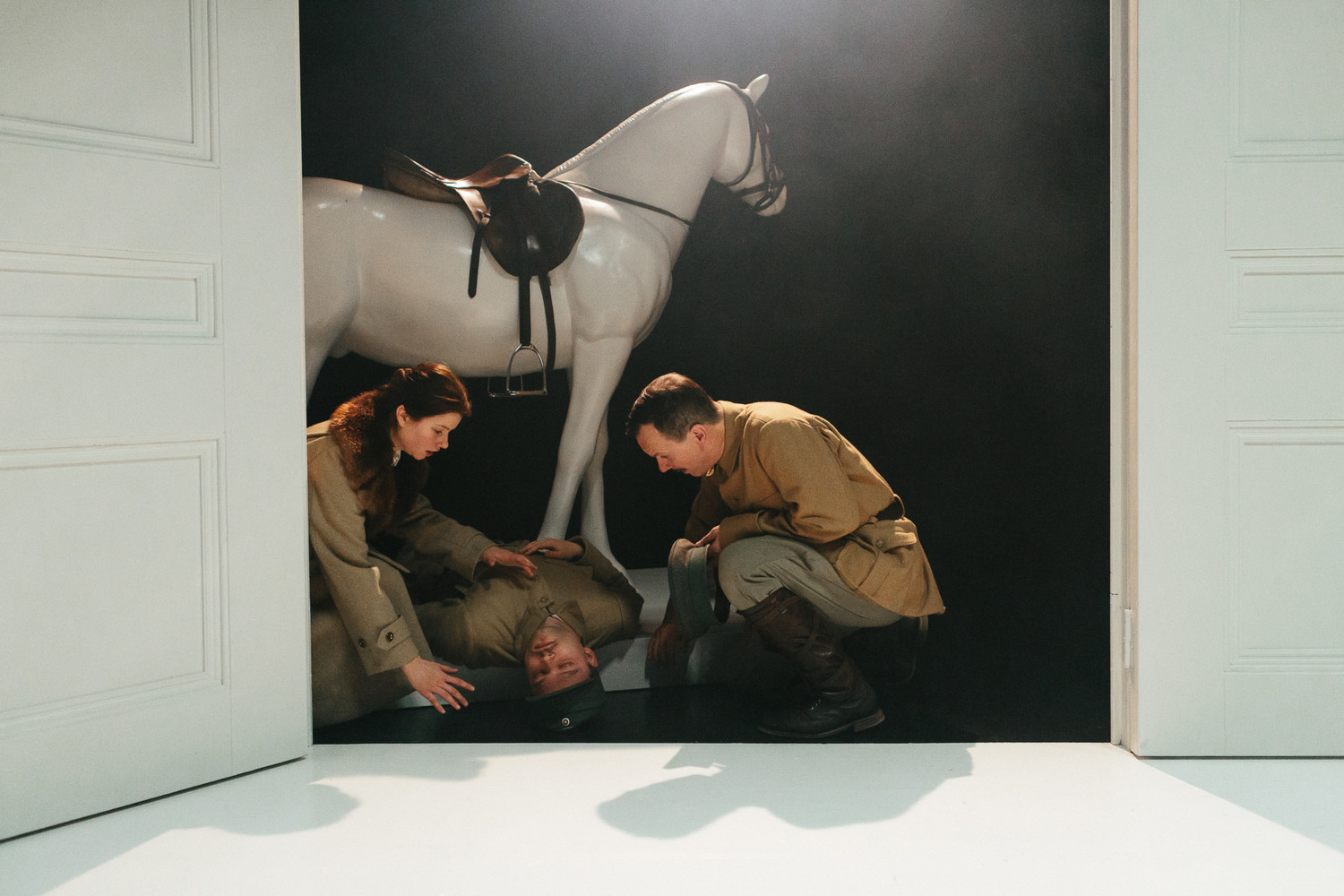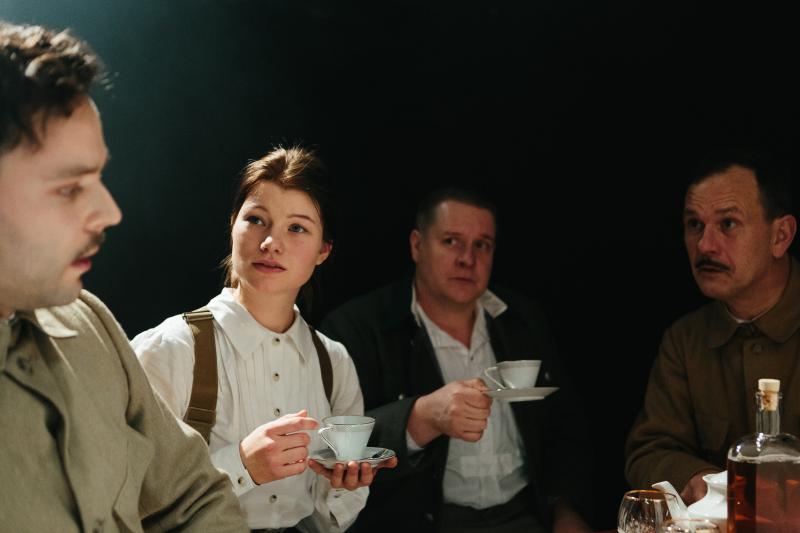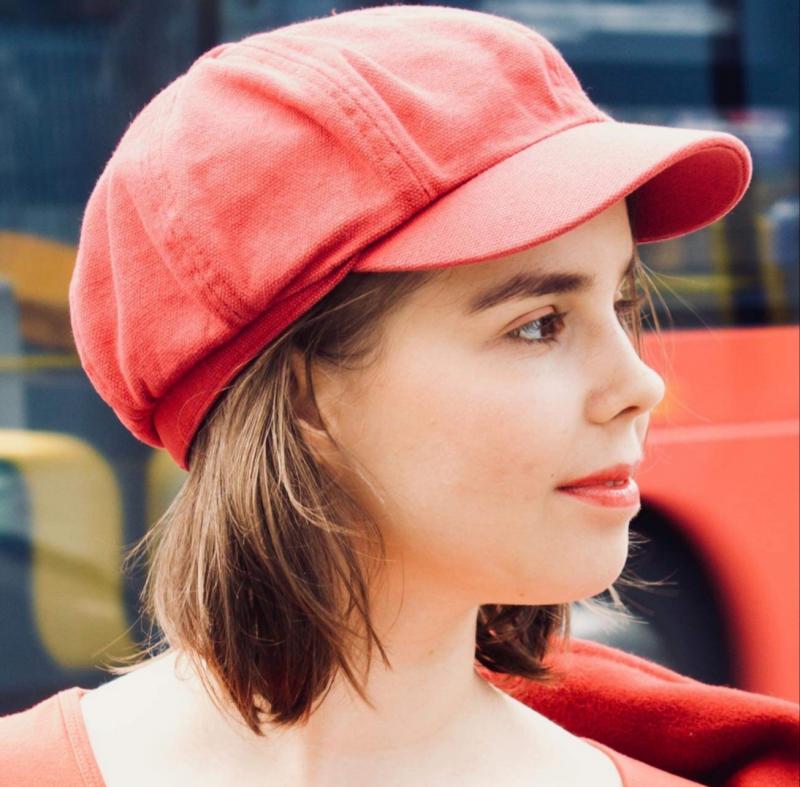Review: HARRIET at the Group Theatre
 Harriet is a play written by the director Milja Sarkola from a true story, taking place in Finland in the early 1900s.
Harriet is a play written by the director Milja Sarkola from a true story, taking place in Finland in the early 1900s.
Some spoilers.
The beginning is beautifully harmonious: there is white, black and light yellow in tender different shades. White in clothes and the walls, black in boots and in the decorations of the piano. The candles beam yellow light in which everything basks.
The first lines are uttered by Minna Suuronen. Uh. A lot is going on in my head, for I have had an exciting day before entering the show. Even though the lines of the actors gently ask for a place in my head, I can't hear them: I, perhaps unfortunately, think on the earlier happenings of the day. The actors say year dates and old-fashioned, thus rather hard names. It's hard to concentrate and hop along. The show is clearly extremely text- and story-based.
If we want to bring attention to the lines I think it's not enough that an actor speaks them on a stage where there are no distractions: I would have needed some kind of an opening. A line like "Dear audience, listen closely to the reportings of the happenings we're about to tell you", to get us into the idea and mode of the show.
So the whole show is pretty much based on the story, the text, the names and the years. As the story-- or stories of the same event-- develop, starting from the most trustful ones due to the date and the teller, to a more imaginary ideas of writers and historians, more glimpses of the actual reality come to life on stage, whether in sound effects of hoofs and chirping birds, or rustly leafs.
Later on the white horse, a symbol of truth, views fully the happenings of the stage, curiously. If we only could ask him what is the truth. He was there all the time, too.
The set design by Kaisa Rasila is well thought out too: there are three different doors, which one by one open and reveal different situations from a different viewpoints. To me that spoke about different perspectives to the story, different truths, even though later on in the play the different stories take on the whole stage, and the doors stay open, not willing to hide anything any longer.
In the scene where we first meet Olof (Pyry Nikkilä) sitting at the table, or off from it, I think the position was a little weird: my first thought was that he was sitting on a toilet. Maybe a little more upward position would have suited better.
I loved the effect of how we saw more of the table and its guests later on, how the chemistries changed between the actros story by story. For example the first time when Gadolin (Robin Svartström) was angry at Olof and wasn't amused with him like he was in the alternative one we saw earlier. Very good!
The swinging on the sleigh was most of the time fairly unbelievable because it was so mechanically synced. Though I don't know if it was a problem, because some of the time the show had very comedic and satire moments in it: the dramatic pauses, for example, which the actors did try to do delicately, but at times made us rather amused.

What comes to the young actor Roosa Söderholm as Harriet, she definitely has the looks and the seed of charisma, but not quite the touch of the present, the grasp of the reality happening on stage. To me it seemed that she relied on the making of faces she'd learnt by heart, not actually being present for us. For example when Olof tried to kiss her, it seemed like her face spoke more like "I'm trying to focus on my lines! Don't you--!" than actually going with it, with the surprise. Almost as if the kissing wasn't rehearsed beforehand and came from Pyry Nikkilä as a moment of artistic inspiration, which was believable and good on his side.
The sound design by Jussi Kärkkäinen is good, especially when the piano is softened at the background. It brings just the perfect mood. The small visual details are also good, for example when the Nymph-Harriet suddenly has red lipstick on her lips as she comes through the door to meet the gentlemen.
The scene that joyfully stole my heart, full interest and attention was when Santtu Karvonen introduced the writer Käkelä's side of the story from the 1994s. Through Santtu's telling as Käkelä we really got into the scene and the whole setting was the clearest: Here, I'm the character whose version of the story is being told, see, let's put the glasses on and change the tone of speaking. Now, I am the character! I set the story, I stomp on stage and explain. And the audience loved it! That way I think the other stories should have been imprinted too: a simple characterization, the name of the teller and then showing the version on stage, with or without the teller being on stage. Just adding of boards of years on the wall with a verbal introduction didn't bring enough clear, interesting, theatrical leading to the plot.
Anyhow Santtu Karvonen did great, enjoyable characters with just subtle physical and vocal changes. He clearly loves being on stage and it's enjoyable to watch!
At the end we saw and heard Harriet's own version of the story, seeing her reading her diary at the back, while another actor, Minna Suuronen, took her place on the front stage. It brought idea and depth to the performance, leaving me wondering if Harriet herself introduced the whole show to start at, as it was Minna Suuronen herself that spoke the first lines.
The ending was notably graceful too. It brought the H J Anderson's TV-series to mind, the ones where he'd just told a story to the children, a story that must have gone through numerous lips and tellers, and then blew the candle off.
I wonder if there were as many candles as there were versions of the story.
Photos: Mitro Härkönen
Article: Rosanna Liuski

Set design Kaisa Rasila
Sound design Jussi Kärkkäinen
Arrangement of the music Joel Mäkinen
Lighting design Ville Mäkelä
Costume Design Riitta Röpelinen
Prop design Viivi Kuusimäki
On stage Santtu Karvonen, Pyry Nikkilä, Minna Suuronen, Robin Svartström and Roosa Söderholm
Reader Reviews

Videos

